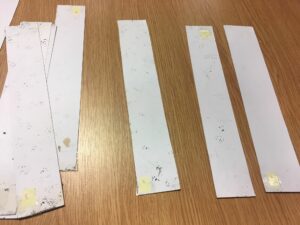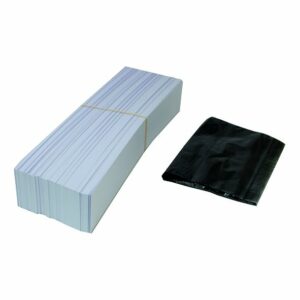
When looking at the Wildcare Ecology Survey Calendar, you will see that we are coming up to the first optimal month for Dormouse surveying! May, August and September are the prime months for Dormouse surveying, so it’s time to get prepared to ensure sure your survey runs smoothly.
Public information on the GOV website states that Hazel dormice are designated and protected as European protected species (EPS). EPS are protected under the Conservation of Habitats and Species Regulations 2017.
It is an offence to:
- deliberately kill, injure, disturb or capture them
- damage or destroy their breeding sites and resting places
- possess, control, transport (alive or dead)
It is also an offence under the Wildlife and Countryside Act 1981 to intentionally or recklessly:
- disturb hazel dormice while they occupy a structure or place used for shelter or protection
- obstruct access to a place of shelter or protection
The Hazel dormouse population has plummeted 72% within the last 25 years, which has led to them becoming very rare and vulnerable to extinction. Dormice are now listed as a rare and most threatened species under Section 41 of the Natural Environment and Rural Communities Act (2006).
The shrinking population of the UK’s Dormice is due to the removal of their natural woodland habitat, as well as the reduction of the UK’s hedgerows. The United Kingdom has lost 50% of its hedgerows since World War 2, and 60% of the ones that remain are poorly managed, so it is clear to see why the Dormouse population is vanishing so rapidly.
If you are a developer, you need to consider if you have taken the correct measures to avoid any negative impact on Dormice, which means carrying out surveys before any planning applications can be permitted. If you have never carried out a dormouse survey, don’t worry, this short blog will give you a brief overview!
What equipment do I need?
Dormouse nest tubes provide a cheap and efficient method of determining the presence of dormice within a habitat as they can be deployed in large numbers for a relatively low cost.
The nesting kit essentially consists of two parts - the wooden 'tray and the nesting tube. dormice form nests in these tubes and it is these nests that are used as indicators of their presence in the habitat.
When setting up these nests, it is recommended that at least 50 tubes are installed, spaced 15 to 20 metres apart. The reason for using 50, is to ensure that the survey is carried out adequately to give confidence that false-negative tests have not been gathered. The nest tubes once installed, usually in Spring, should be left alone until the summer months when they should then be checked bi-weekly.
The nesting tubes need to be tied to the bottom side of horizontal branches, with the opening facing toward the shelter of the tree/hedge that it is connected to. Be advised that the Wildcare Tubes and Inserts do not come with any equipment to connect the tubes to the branches. However, we do stock apparatus to be able to do that. We offer a variety of different ways to do it, including PVC Coated Tying Wire, Cable Ties (Pack of 100) and Velcro Straps.
We recommend using the Velcro Straps, this is because they are reusable; you won’t have to worry about acquiring new ones each time you need to carry out a survey, plus it helps reduce the use of single-use plastic, which not only benefits the dormice, but everyone on the planet!
We partner with a local brand, Raw Workshop, who provides us with our dormouse nest tube inserts. RAW workshop funds their youth provisions programme which helps young people in the local area who may not have gelled in mainstream education. The programme provides the opportunity to gain qualifications in Maths, English and Carpentry, so when buying these products from us, you are helping support this great programme.
Nesting tubes alternatives.
Footprint tracking.
If you wanted an alternative to nesting tubes, there are other options. Firstly, footprint tracking kits. The footprint tracking tubes look similar to the nesting tubes, and likewise, you also attach the footprint trackers to the underside of horizontal branches. When a dormouse walks through the tube, they will walk through a charcoal powder which will leave prints on a sheet of thick card inside the tube, indicating dormice are in the area.
The footprint tracking technique is still relatively new. It was created by Suffolk Wildlife Trust, with the help of PTES and has since been recommended in the CIEEM magazine in practice 2018.
With more and more people testing the footprint tracking method, there has been increasing amounts of evidence to show its effectiveness in both scrub vegetation and sub-optimal habitat. Furthermore, identification of prints was easily identifiable in the field with minimal experience.
If you believe footprint tracking would be more beneficial for your survey, or perhaps alongside your nesting tubes, we have made a consumables pack available to you, which includes 300 sheets of card, and 120g of pharmaceutical-grade charcoal powder. This amount should be sufficient for a 3-month survey, checking the tunnels twice monthly.
Consumables pack & successful tracking paper results.
Dormouse Nest Boxes
At Wildcare we also offer a variety of nesting boxes that provide the same service as the nesting tubes. We have boxes with sliding rooves, and boxes with lift-off rooves readily available on our website. There isn’t a difference in performance, so it just comes down to your preference on which you go for.
When installing the nesting box, you want to make sure that the entry point for the dormice (small round hole) is facing the trunk of the tree you attach it to. Like the tubes, the nest boxes should also be checked twice a month to see if anyone is home, you can do this by sliding your finger into each corner of the box and having a gentle feel to see if you have any new friends!
We hope this blog has helped you prepare for your dormice survey; hopefully, you have gained some insight into what method will be the best for you. Good luck with your survey, and feel free to share your findings with us, we love seeing how your surveys go!
To view our whole range of Dormouse monitoring equipment, click the link below:
If you need help with anything, feel free to message us on one of our four social media channels, where the links can be found on the top right of our website.
Reference list.
- Acer Ecology. (2019). Why are Hazel Dormice Endangered?. Available: https://www.acerecology.co.uk/why-are-hazel-dormice-endangered/#:~:text=Their%20habitat%20tends%20to%20be,the%20drop%2Din%20dormice%20population. Last accessed 05/04/2022.
- Acer Ecology. (2017). April is a Good Time to Undertake Dormouse Nest Tube Surveys. Available: https://www.acerecology.co.uk/dormouse-nest-tube-surveys/#:~:text=The%20tubes%20should%20be%20fastened,by%20a%20licensed%20dormouse%20ecologist. Last accessed 05/04/2022.
- Engain. (2021). It’s the season for reptile and dormouse surveys. Available: https://www.engain.com/its-the-season-for-reptile-and-dormouse-surveys/. Last accessed 05/04/2022.
- Gov.UK. (2022). Hazel dormice: advice for making planning decisions. Available: https://www.gov.uk/guidance/hazel-dormice-advice-for-making-planning-decisions. Last accessed 05/04/2022.
- Hedgelink. (2021). About Hedges. Available: https://hedgelink.org.uk/campaign/national-hedgerow-week/about-hedges/#:~:text=Due%20to%20their%20presence%20at,60%25%20are%20badly%2Dmanaged. Last accessed 05/04/2022.
- PTES. (2021). Footprint Tunnels. Available: https://ptes.org/campaigns/dormice/surveying-and-monitoring-hazel-dormice/footprint-tunnels/. Last accessed 05/04/2022.




